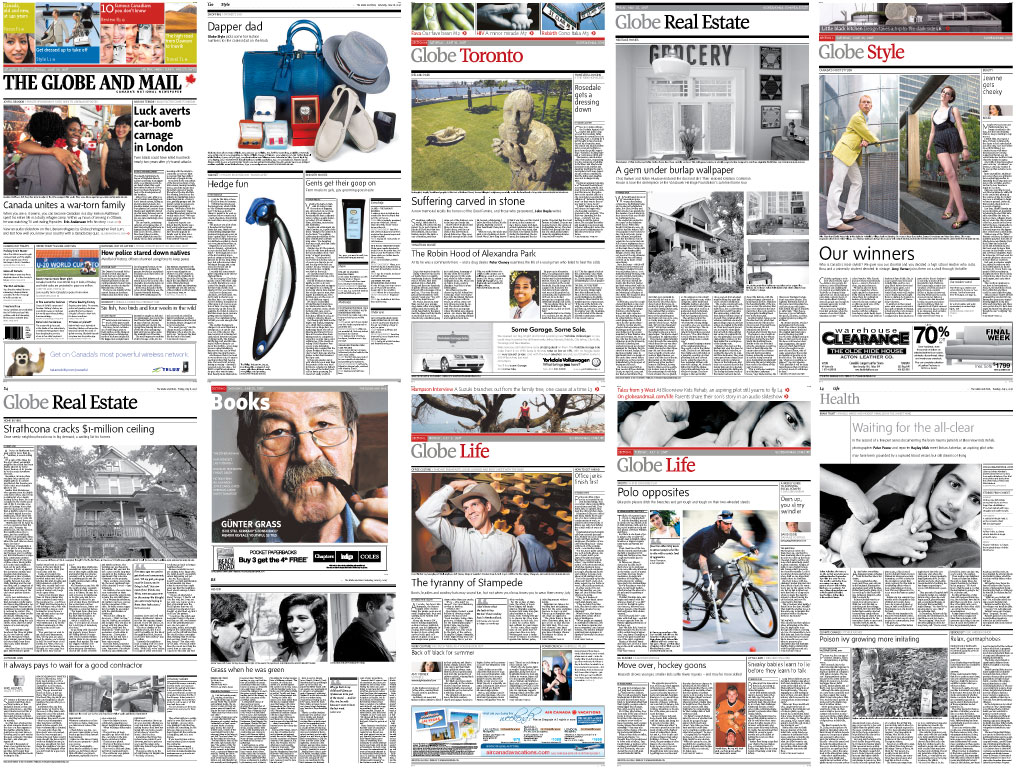How I evolved into a UX designer
Everyone has a story on how they got started in UX. I got my start while working on Quidco for Tipping Canoe. Back in 2009 UX was still an emerging field in the startup and corporate world outside Silicon Valley, and finding a formal education was difficult at the time.
The UK’s leading cashback site had just turned five and we wanted to embark on a thoughtful understanding of consumers perception of cashback rewards and our site. We started by bringing the best, Leisa Reichelt, who led our front-end dev and myself through a two-week assessment of our product.

No UX process would be complete without stickies—all walls and windows were covered
Leisa began by conducting interviews which included usability tests of our product. This was done to build a picture of how the concept of our product was perceived. We then poured over the results to build not only a picture of how potential customers understood cashback, but to build out the design guidelines and feature roadmap that would serve to evolve the product. We filled a room with stickies (including the windows), prioritized and even created a whiteboard explainer video. However that was only the beginning, both for the project and my journey.
I was fortunate to have had my first user research process experience, and to have learned this valuable tool from Leisa. This process was an eye opening experience and the first time I was exposed to user research and real-world human-centric design thinking. While I had always designed with the customer in mind (the target reader of a publication), this fundamentally changed my approach to design. And I didn't look back.
I returned to Winnipeg and began the work fleshing out the personas, and taking the wireframes from mid-fidelity to the final mockups. After we relaunched the site, I was invited to return to London in 2010 as Quidco’s first permanent UX designer. The interviews Leisa conducted and the research we processed served our understanding for the next 3 years. I continued that initial work conducting regular interviews and in-person usability tests as the product was expanded and our membership grew.

Early wireframes produced as part of the user research analysis by Leisa Reichelt
In those first years I was on a learning journey. I had my solid design foundation, but I needed to get educated. It turned out London was the perfect place to be for learning UX.
I began regularly attending Leisa’s London UX Bookclub meetings, monthly meetups from IxD to service design, and conferences like UX London, Mind the Product, dContruct (and numerous others I can’t recall without Lanyrd). I have a stack of UX, Interaction design and user research books that I consumed to grow my understanding.
My role at Quidco grew and evolved just as the company grew and became a well-known brand. There were ten people in the London office when I joined, growing to over 100. We were still very much a startup, moving quickly and building out a larger reward platform. Over those years my role moved teams from IT to Product and finally Marketing, a perfect parallel for as startup’s phases—building, growth and marketing. The product continued to evolve, as did our design process, but we were always listening to our customers and continuously testing the product with real people. In those years I watched our member base grow from 300,000 to over six million in the UK alone. We spread Quidco to as many people as possible, expanding outside the UK with Qipu in Germany and launching Shoop in France.
Before UX
When I was in design school my focus was still on editorial design. There were so many great fields to explore including information and exhibition design, or branding design and art direction. However having previously worked as an editorial designer and being located in Toronto, I had some great opportunities at some respected publications.

A sampling of editorial projects along side my book, Requires Assembly
I had finished my studies by writing a book on newspaper design as my design thesis. Created as a manual for small and student newspapers who were struggling with annual turnover and the lose of knowledge, Requires Assembly opened some doors.

Just a few of the Globe & Mail pages I laid out post 2007 redesign
In a reverse process I started as a contractor on the Globe & Mail’s redesign web and print teams before landing a internship as a design editor. Excited by redesigns, I ventured off to help several companies and magazines including Umbra, The Guide, and The Toronto Star.
Then in 2008 something began to happen in the industry. The last Society of News Design conference I attended was focused on how to transition to careers outside newspapers. It seemed the perfect time to make a career move and fully embrace digital design. I landed at the product incubator Tipping Canoe in early 2009 after completing one last print redesign project. For eight years I stayed in the Tipping Canoe sphere, working my way up to Head of Design & UX at Quidco leading a small in-house design team, before returning to design work and building new products. Looking to return to Canada, and sink my teeth into something large and complex, I joined Canadian Tire in their Winnipeg Innovation studio. I’m focused on our eco-system of apps, both for customers and retail employees.